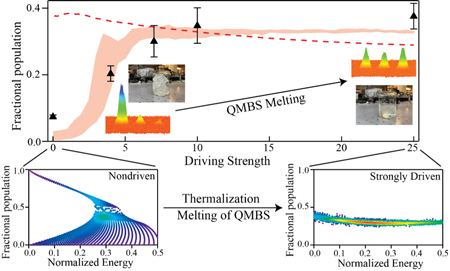
OSU physicists demonstrate how quantum systems don't always melt
Friday, April 4, 2025
Media Contact: Elizabeth Gosney | CAS Marketing and Communications Manager | 405-744-7497 | egosney@okstate.edu
In a recent theory-experiment collaboration, two Oklahoma State University Department of Physics groups demonstrated the generation of quantum many-body scars, or QMBSs.
Dr. Yingmei Liu’s experimental quantum physics group and Dr. Thomas Bilitewski’s theoretical quantum physics group published their work, “Observation of Ergodicity Breaking and Quantum Many-Body Scars in Spinor Gases” in Physical Review Letters on March 18. It was supported by the National Science Foundation and the Noble Foundation.
“The journal, Physical Review Letters, is considered one of the most prestigious in the field of physics,” the OSU research teams said. “Having a paper published in PRL highlights the recognition of the world-class research done here at OSU’s physics department."
The researchers explained their teams’ work in terms of ice and coffee:
“In hot coffee, the ice quickly melts as its temperature rises to match that of its surroundings. While this process of equilibration is taken as a given in daily life, the quantum world may surprise us. Indeed, understanding the mechanisms by which quantum systems equilibrate, or thermalize, has been a long-standing goal since the first quantum revolution was initiated by legendary physicists including Albert Einstein and John von Neumann."
The team utilized a programmable neutral atom quantum simulator to demonstrate the efficient generation of quantum many-body scars, which, in the team's analogy, are a quantum version of ice that doesn’t melt in hot coffee.
While generic quantum states evolve over time toward equilibrium, a small number of states, known as QMBS, can avoid this process through approximate constraints on the relaxation dynamics and are capable of preserving the memory of the initial state. When coupled to carefully designed driving fields, the QMBSs can be made to melt, resulting in a fully thermalized system.
This work establishes a new platform for exploring QMBSs advancing the study of quantum thermalization dynamics, which could lead to many exciting applications including quantum information storage.
To read “Observation of Ergodicity Breaking and Quantum Many-Body Scars in Spinor Gases,” visit the Physical Review Journals website.
